Irvine, Calif., June 2, 2020 — Octopuses, squids and other sea creatures can perform a disappearing act by using specialized tissues in their bodies to manipulate the transmission and reflection of light, and now researchers at the University of California, Irvine have engineered human cells to have similar transparent abilities.
Tag: Engineering
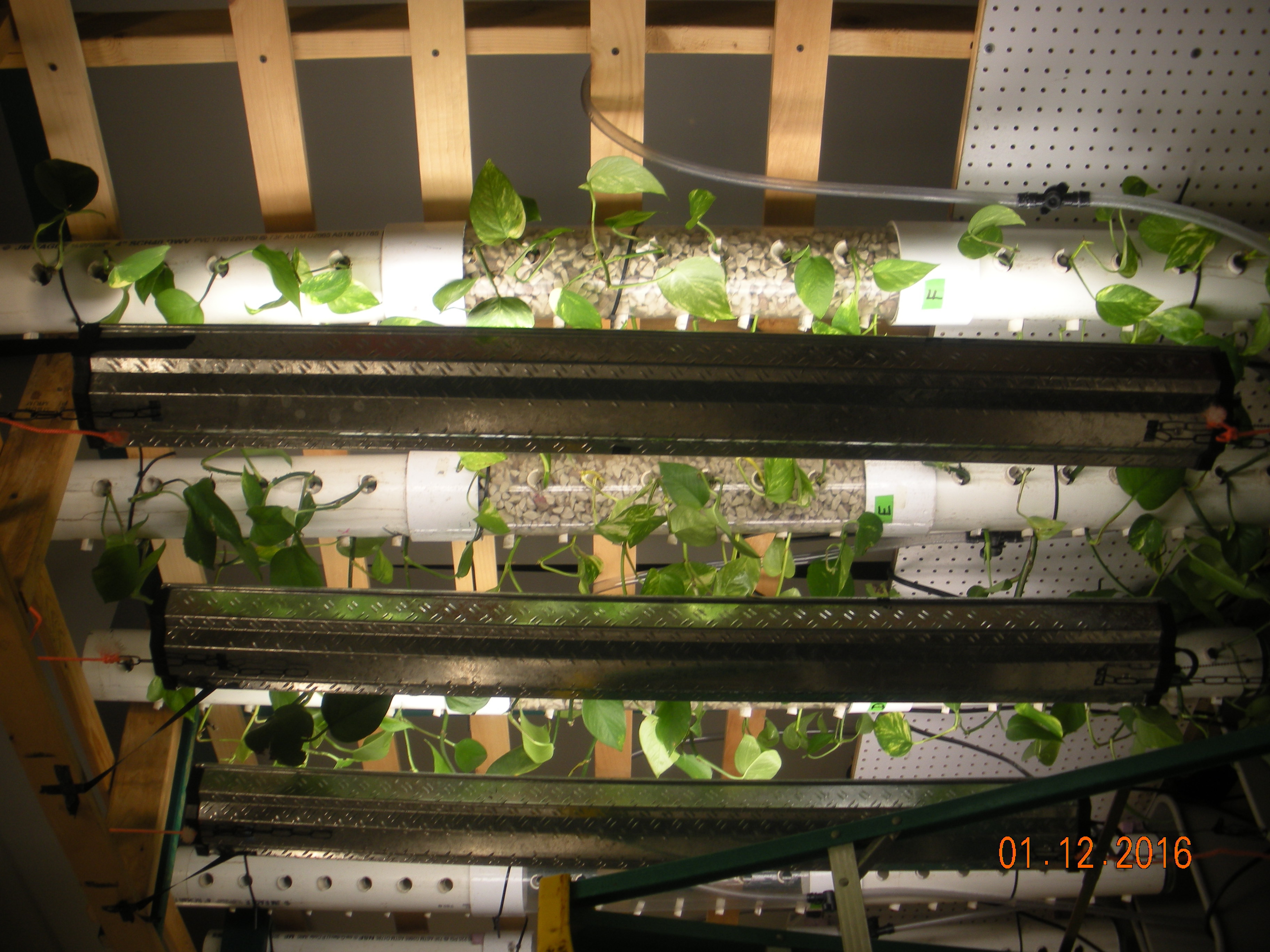
Living Walls: University Researchers Develop Green Tech for Treating Wastewater from Microbreweries
SUNY College of Environmental Science and Forestry (ESF) and Rochester Institute of Technology (RIT) researchers received a patent for green wall technology that will provide craft breweries cost-effective and sustainable options for wastewater treatment. The team found a way to make the common Pothos and recycled glass an environmental solution to support the growing microbrewery trend in the region.
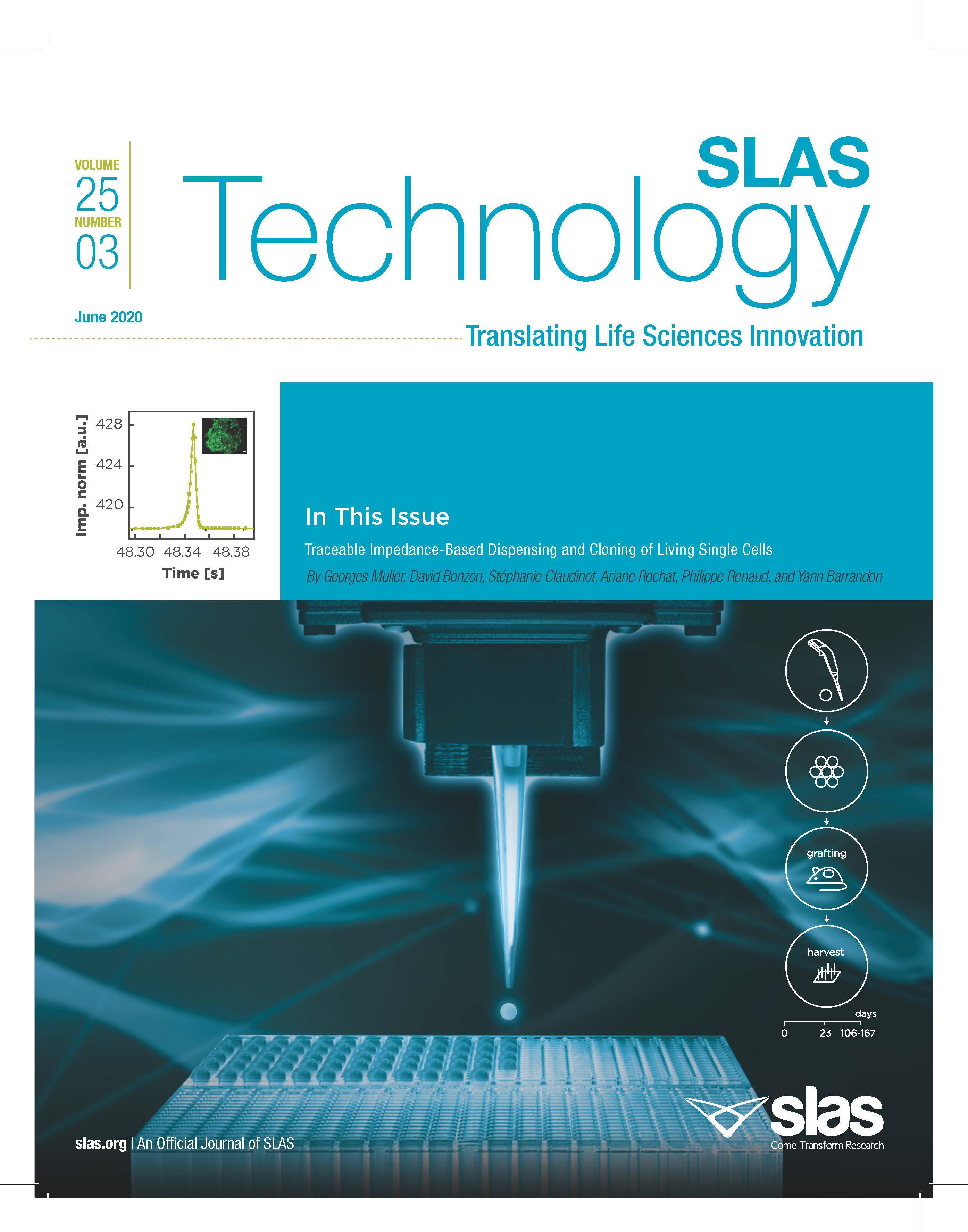
June’s SLAS Technology Highlights Two Research Papers Authored by SLAS2019 Ignite Award Winner
The June issue of SLAS Technology features two related research papers authored by Georges Muller, Ph.D., (SEED Biosciences, Switzerland) the SLAS2019 Ignite Award winner and a top ten 2020 SLAS Innovation Award finalist. Both of Muller’s contributions to the issue include research based on a single-cell cloning method and pipet his teams created to help solve efficiency and regulatory issues.
Biomedical engineers to test ultraviolet light’s ability to kill coronavirus
The idea of UV sterilization is not a new one, but little or no scientific data about its potency against COVID-19 have been collected, until now. Thanks to a one-year, $182,728 grant from the National Science Foundation, researchers at Binghamton University, State University of New York are beginning to test UV’s effectiveness.
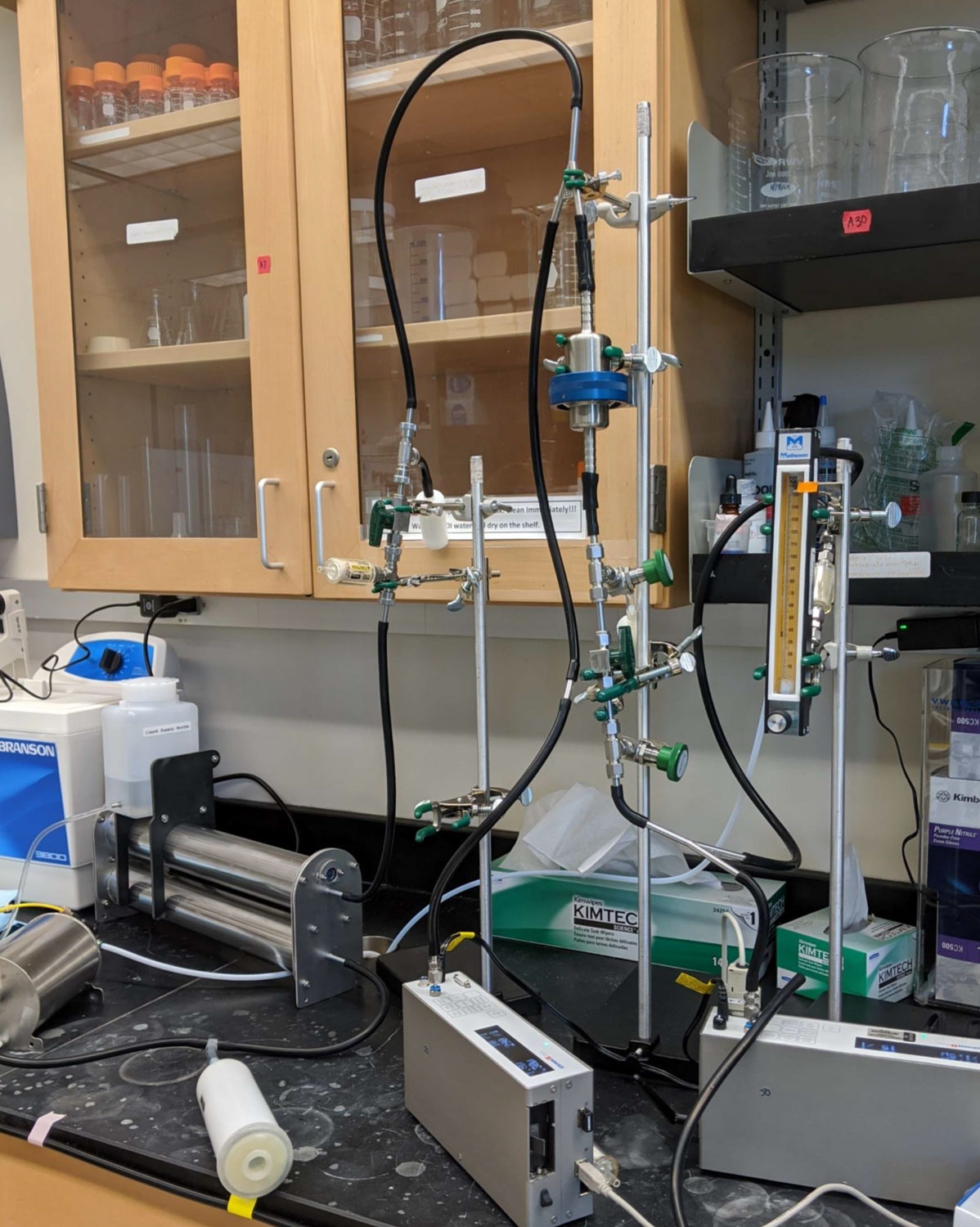
Researchers Collaboratively Test Mask Effectiveness to Fight Spread of COVID-19
Faculty members at Texas Tech University and the Texas Tech University Health Sciences Center are examining both intermediate materials and finished masks from a multidisciplinary approach.
The Fannie and John Hertz Foundation Announces 2020 Fellows
The Fannie and John Hertz Foundation, a nonprofit organization dedicated to empowering the most promising innovators in science and technology, has announced the 2020 recipients of the Hertz Fellowship. This year’s fellowships will fund 16 researchers whose goals range from developing drugs more quickly, cheaply, and effectively, to advancing artificial intelligence to creating a carbon-neutral future.

12 ASU engineering faculty earn the National Science Foundation CAREER Award
Twelve ASU engineering faculty members have earned the NSF CAREER Award between November 2019 and April 2020. More than 40 early-career investigators in the Fulton Schools of Engineering have earned this prestigious honor in the last five years.
Twitter study tracks early days of COVID-19 pandemic in U.S.
A preliminary new study from Binghamton University, State University of New York looks at a snapshot of the U.S. coronavirus response on Twitter.

Deans for Colleges of Business, Engineering and Associate Provost for Urban Research and Community Engagement Named
UNC Charlotte announces new leadership for three academic areas–business, engineering, and urban research and community engagement–pivotal to the University’s mission to serve the greater Charlotte region and beyond.
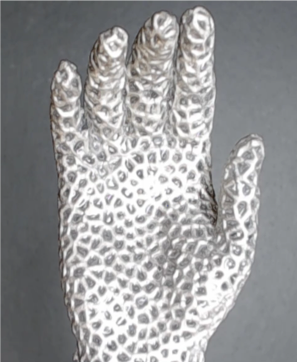
Liquid metal research invokes ‘Terminator’ film — but much friendlier
Researchers at Binghamton University, State University of New York have developed “the first liquid metal lattice in the world.” The team has created a series of prototypes that return to their shapes when crushed.
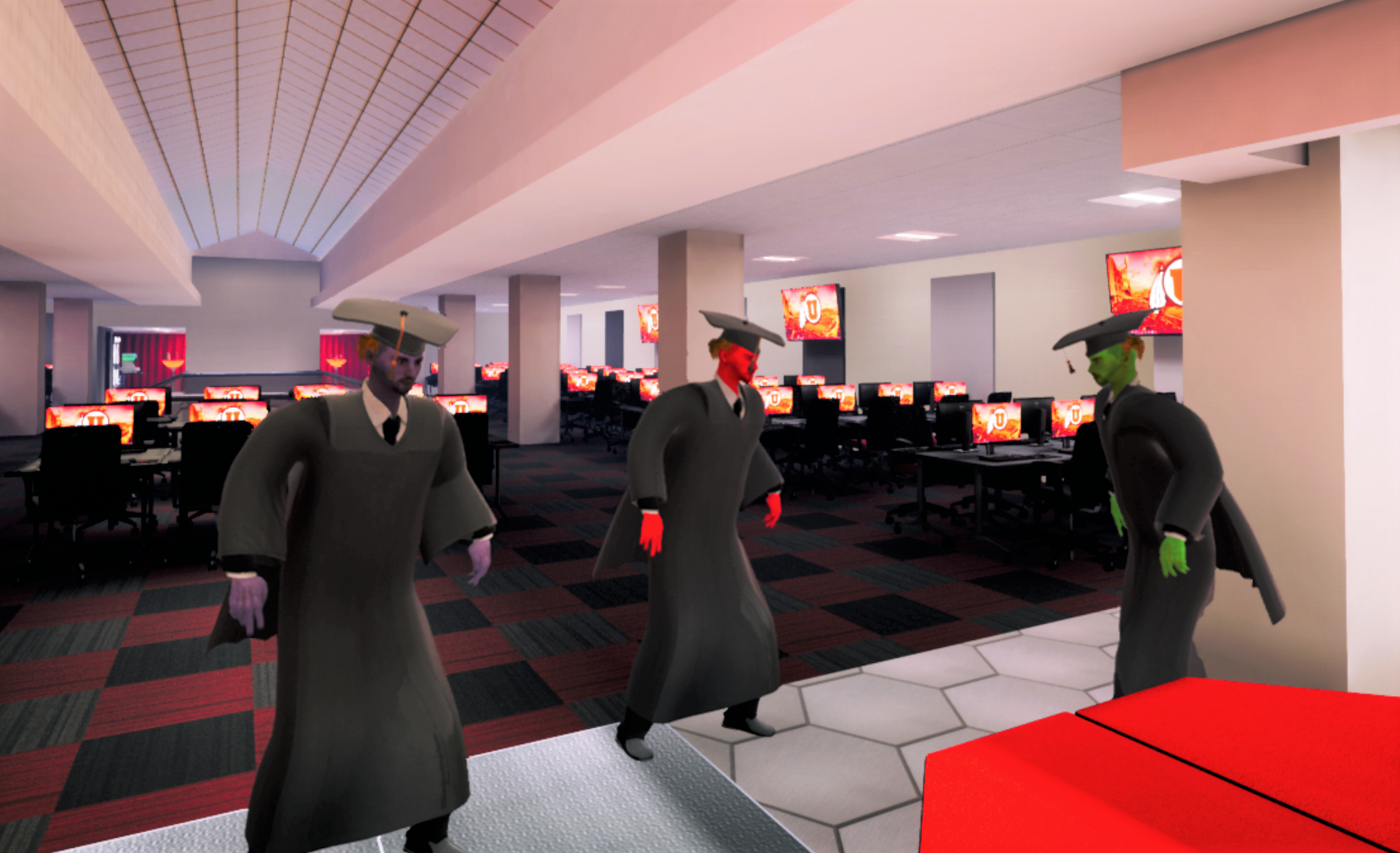
Graduating in game
The University of Utah’s nationally ranked video game development program, Entertainment Arts & Engineering, will hold its own graduation ceremony for 2020 seniors – in an online video game they created.

Cornell engineers help get NYC’s L train back on track
New York City’s L train has resumed full service following an extensive rehabilitation project that finished six months early and $100 million under budget, thanks in part to Cornell University engineers.
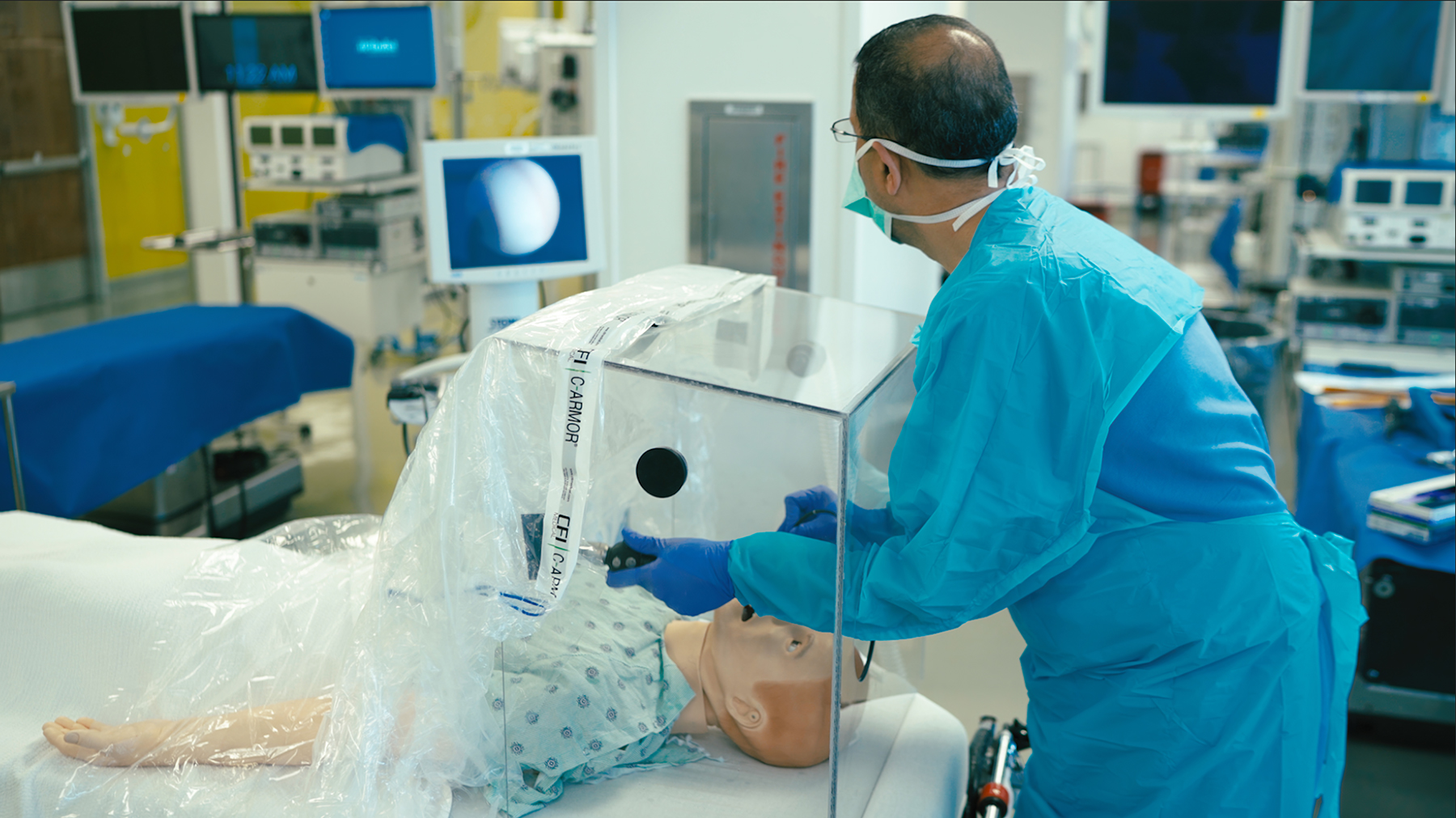
Research and innovation as an essential function amid the COVID-19 pandemic
Necessity being the mother of invention, Houston Methodist clinicians, researchers and staff have collaborated on a number of clinical device and research innovations in response to COVID-19. Houston Methodist Academic Institute leadership has continually emphasized translational research in new technologies.

Share the Planet: Protecting California’s Wildlife
See how the CSU is helping preserve California’s wildlife as threats to their habitats continue to grow.
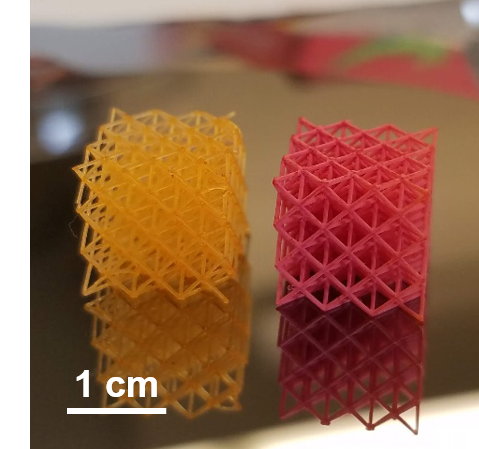
A Great New Way to Paint 3D-Printed Objects
Rutgers engineers have created a highly effective way to paint complex 3D-printed objects, such as lightweight frames for aircraft and biomedical stents, that could save manufacturers time and money and provide new opportunities to create “smart skins” for printed parts. The findings are published in the journal ACS Applied Materials & Interfaces.
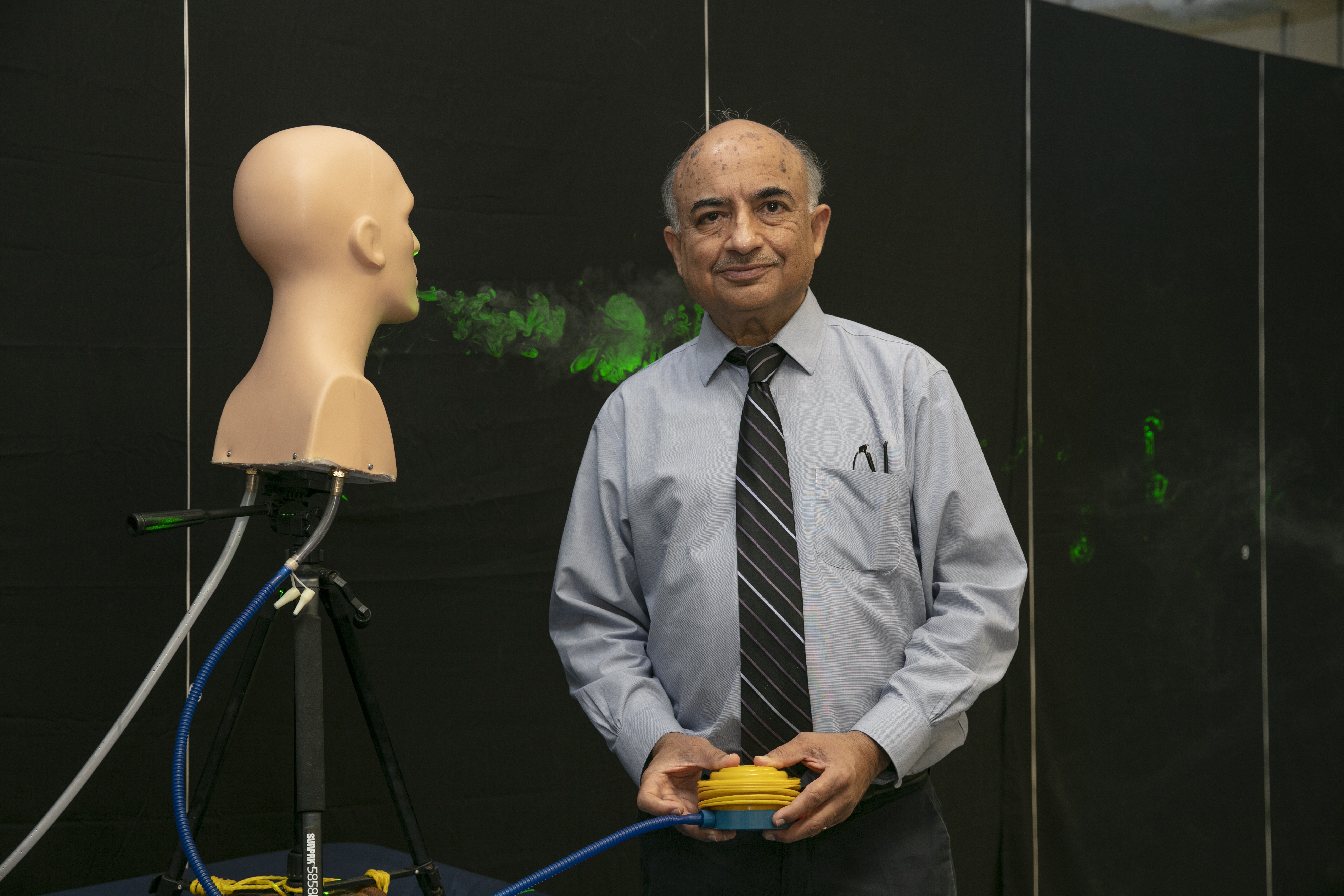
Stay 6 Feet Apart. Mechanically Simulated Cough Reveals That May Not be Enough
A preliminary, flow visualization experiment suggests that staying 6 feet apart may not be sufficient. It only took the particles from the simulated cough a couple of seconds to travel 3 feet; in about 12 seconds it reached 6 feet and in about 41 seconds it reached around 9 feet. For a heavy cough, the particles can even travel up to 12 feet. In addition, a face mask doesn’t stop the particles 100 percent, but it does slow down the cough jets.
Researchers develop real-time sleep and health monitor
Smart sensing device can alert loved ones and caregivers to falls and other emergencies
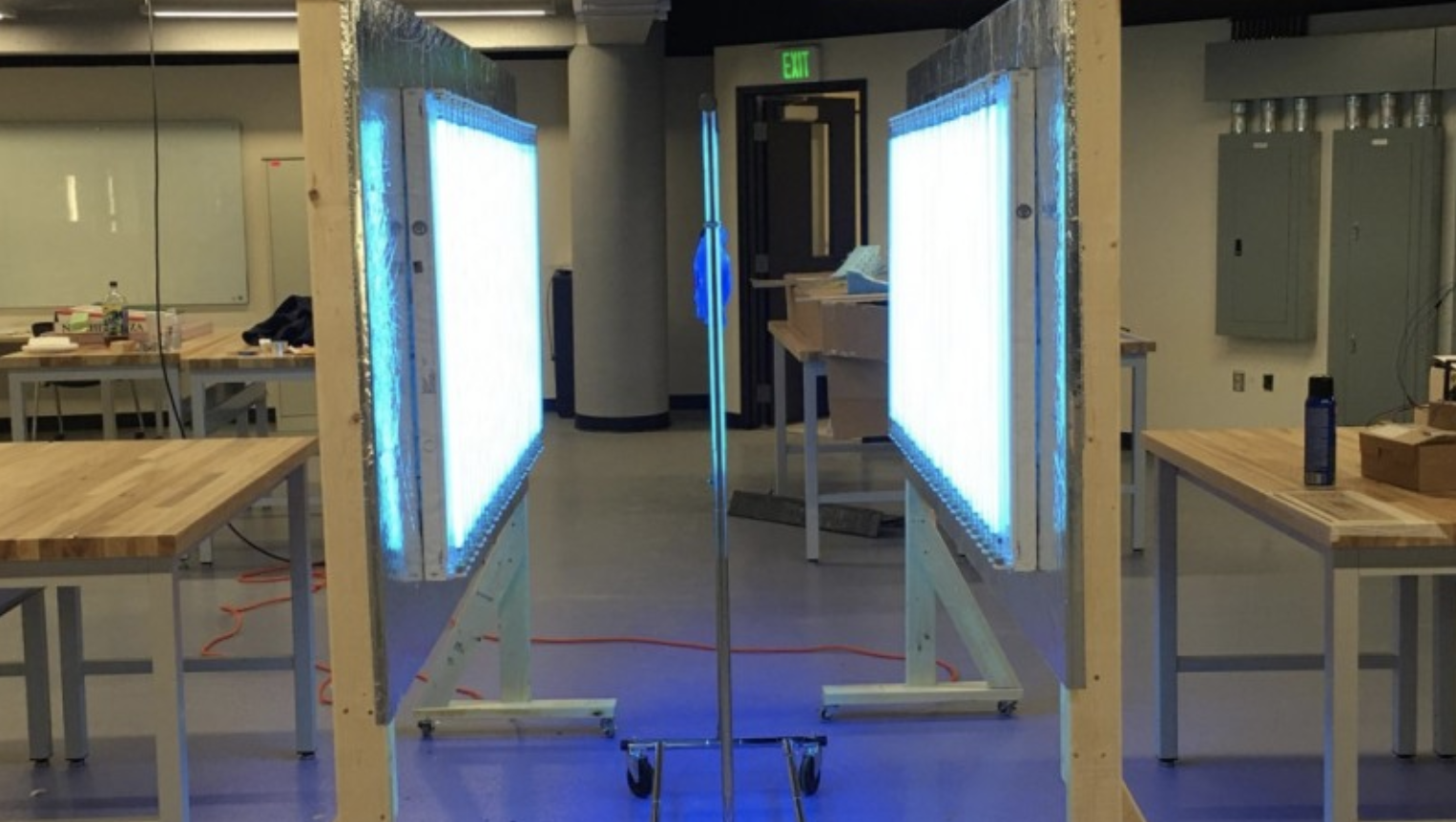
Engineers design UV sterilization stations to aid healthcare workers during coronavirus pandemic
Engineers at Binghamton University, State University of New York have designed sterilization stations that use ultraviolet light to kill the coronavirus on any contaminated personal protective equipment (PPE) such as N95 masks and face shields.
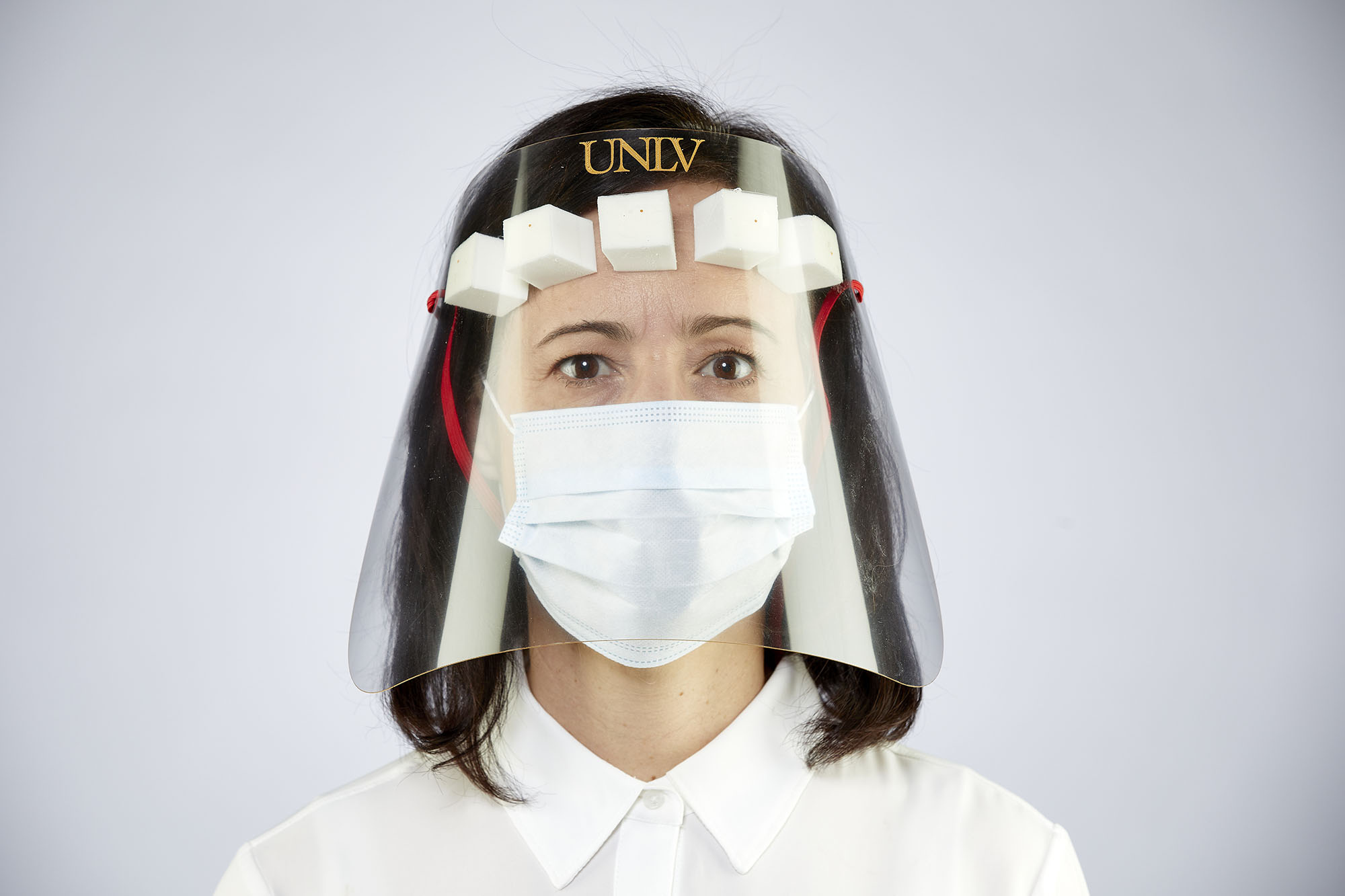
UNLV Engineers Fabricate PPE for Local Medical Community
Health care providers across the Las Vegas Valley were facing an unprecedented challenge, worsened by a lack of supplies to protect themselves. A local medical community group reached out: Could the UNLV College of Engineering help fill the gap for personal protection equipment, such as face shields? The college put together a task force.
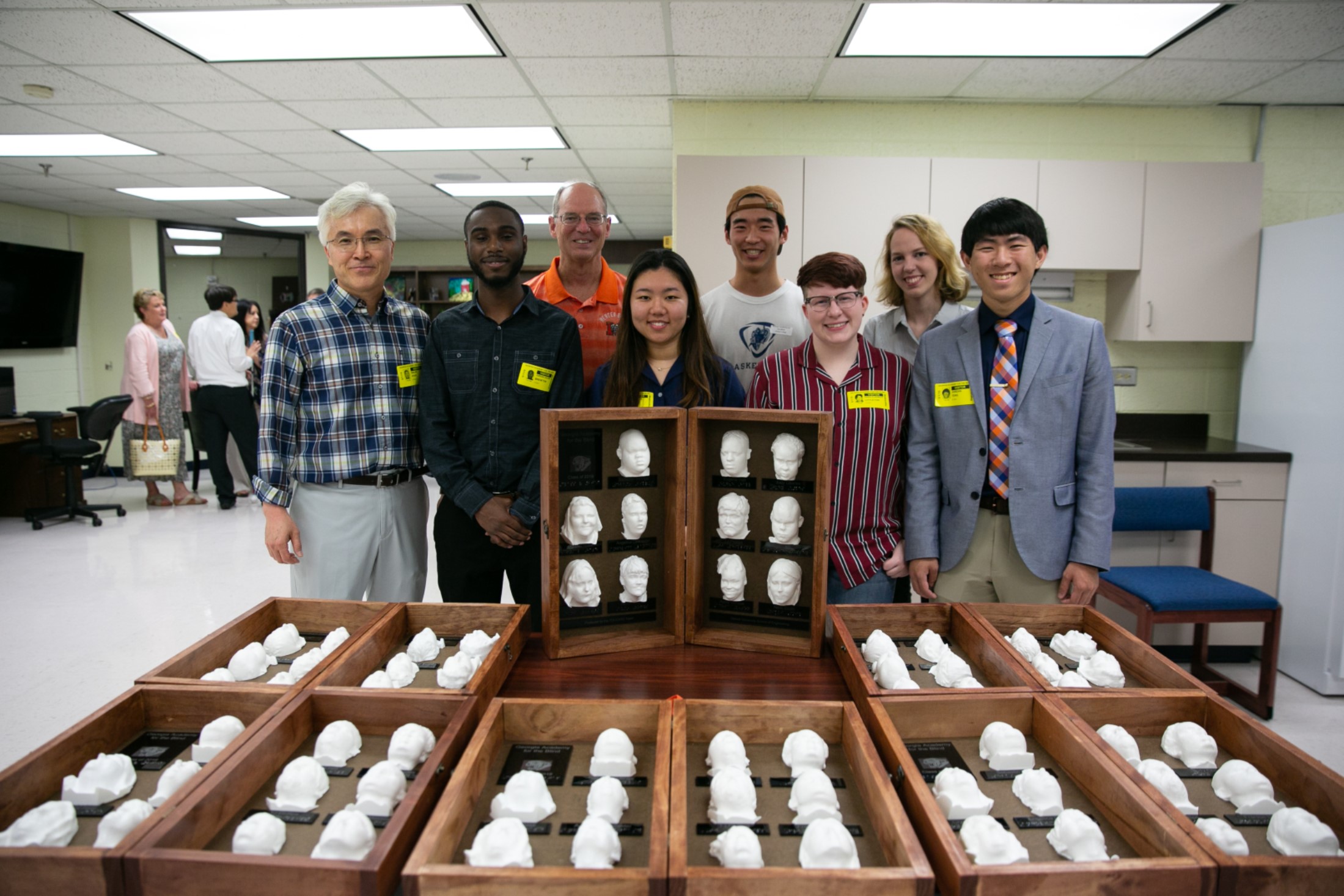
CUR’s First Virtual Posters on the Hill Showcases Undergraduate Research to Policymakers, Scholars, and the Public
On April 21, students will participate in the 2020 Posters on the Hill event. This year, because of COVID-19 challenges, undergraduate researchers and faculty mentors from institutions such as Butler University, California State University–Fullerton, and University of Chicago will share their research online.
Rutgers Experts Available to Discuss Environmental Protection During COVID-19 Crisis
New Brunswick, N.J. (April 15, 2020) – Rutgers University–New Brunswick professors Nicole Fahrenfeld and John Reinfelder are available for interviews on environmental protection issues during the COVID-19 pandemic. Fahrenfeld can discuss issues including microbial water quality, sewer issues (including what…
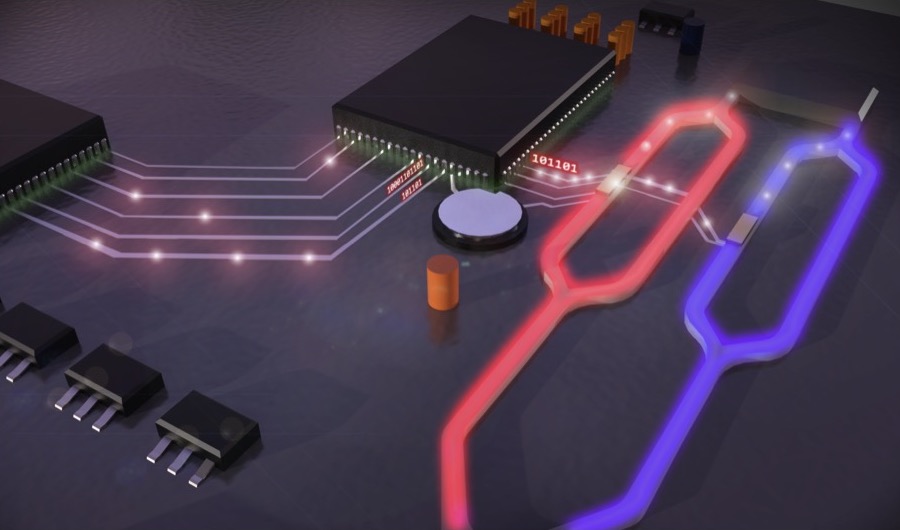
Breaking the Size and Speed Limit of Modulators: The Workhorses of the Internet
SUMMARYResearchers developed and demonstrated for the first time a silicon-based electro-optical modulator that is smaller, as fast as and more efficient than state-of-the-art technologies. By adding indium tin oxide (ITO) – a transparent conductive oxide found in touchscreen displays and…
Engineering develop ventilator and mask prototypes using 3D printing to help during coronavirus pandemic
Engineers at Binghamton University, State University of New York are working with healthcare providers in the region to develop technology to help deal with the coronavirus pandemic.
Binghamton University Student Builds Ventilator Prototype to Assist During COVID-19 Pandemic
Jacob Goodman, a mechanical engineering student at Binghamton University, State University of New York, built a ventilator prototype using mainly parts he purchased from Walmart, to help during the coronavirus pandemic. Here he breaks down the parts and how the device works.

NRAO’s Central Development Laboratory: Making the Invisible Visible
Nestled among the hills of the University of Virginia campus are a couple of nondescript buildings. They are home to NRAO’s Central Development Laboratory (CDL). The buildings are easy to overlook, just as it is easy to overlook the work done by CDL. We see photographs of the radio dishes at Atacama Large Millimeter/submillimeter Array (ALMA) and the Very Large Array (VLA) under a starry sky, and the beautifully rendered scientific images they produce. But between these two extremes is a complex set of processes that transform the faint radio signals of distant space into usable scientific data. Achieving that transformation effectively is one of CDLs most important jobs.
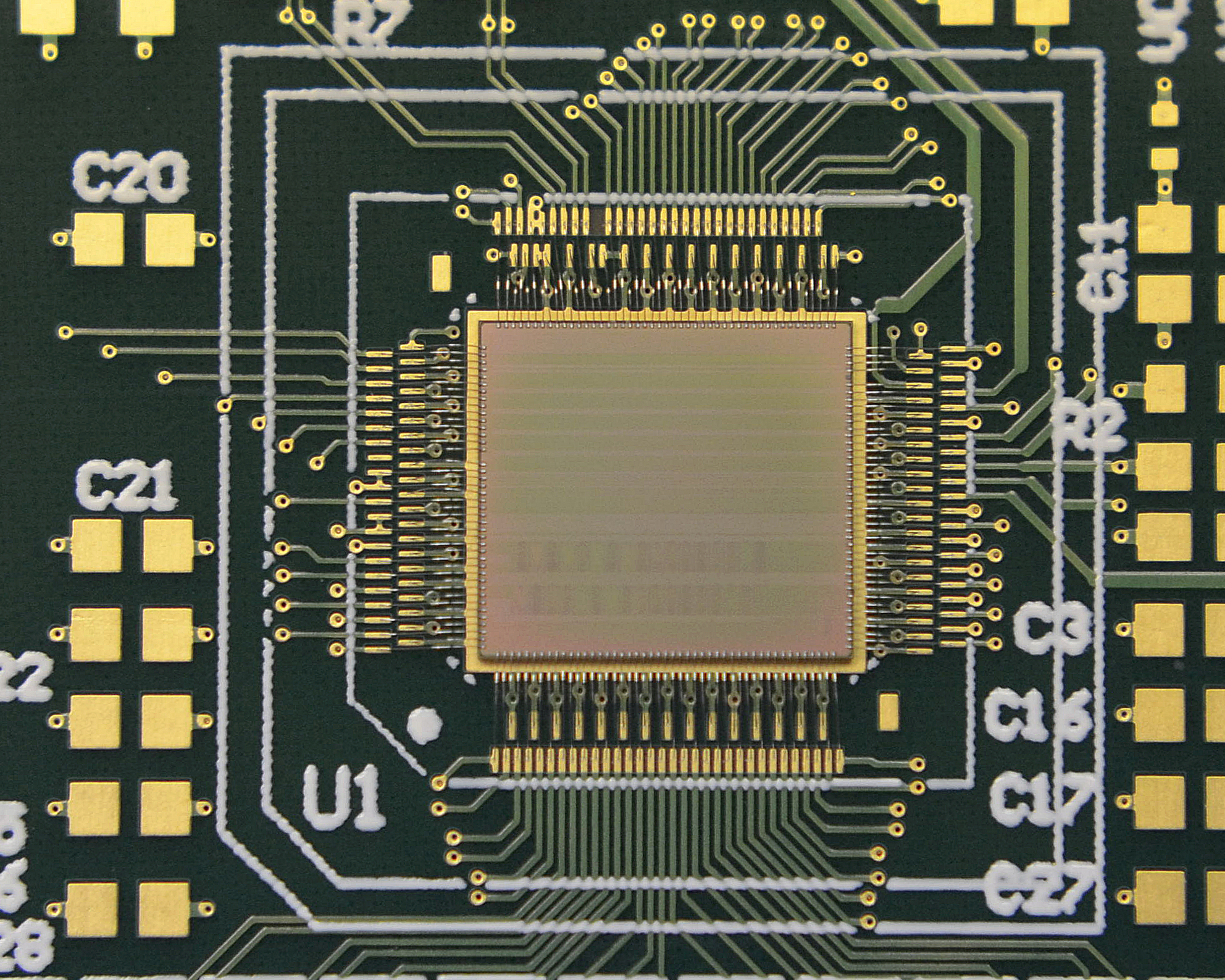
The cold eyes of DUNE
Scientists at several DOE national laboratories working on the upcoming Deep Underground Neutrino Experiment are developing integrated electronic circuitry that can operate in DUNE’s detectors at temperatures below minus 200 degrees Celsius.
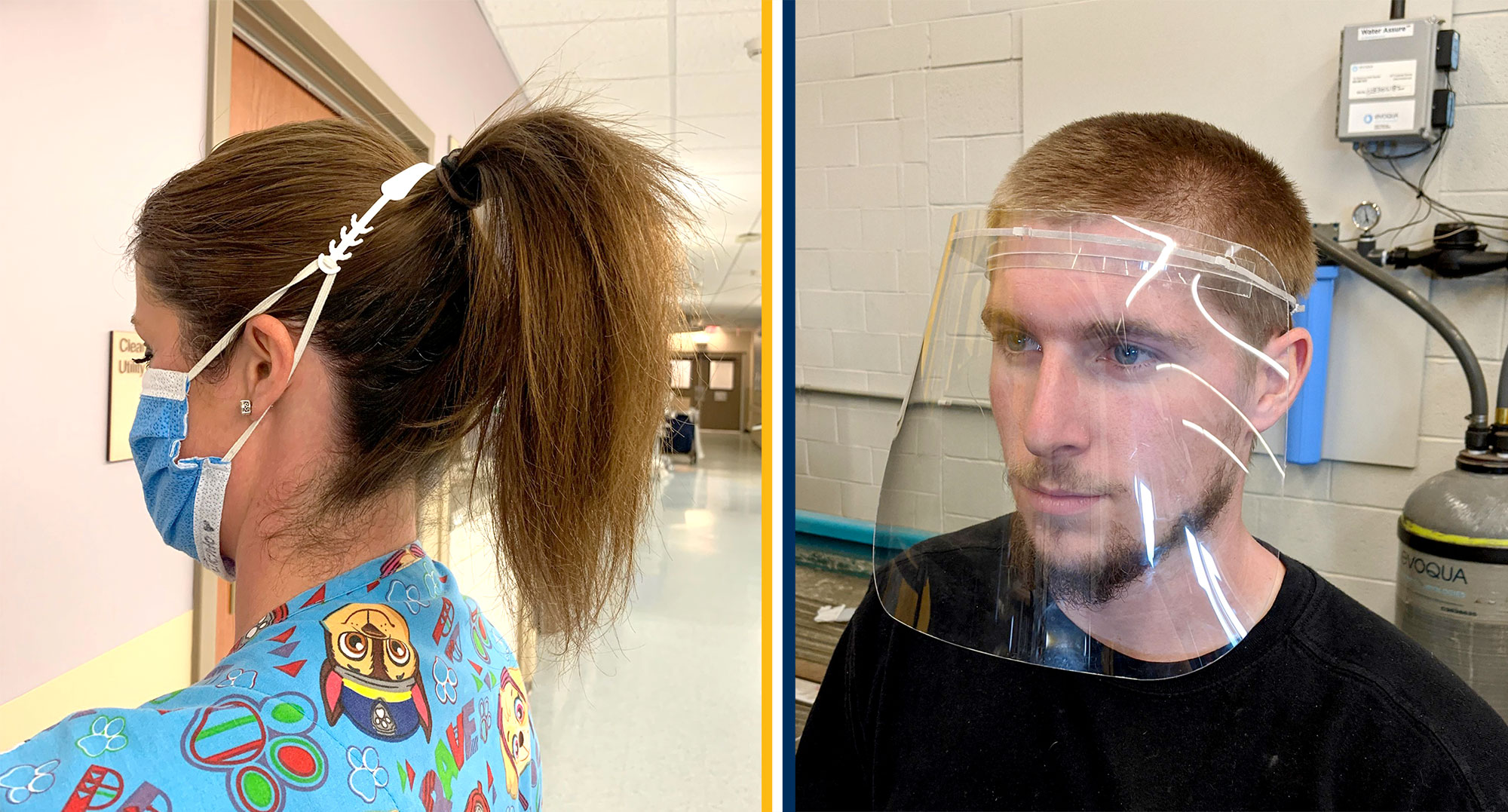
West Virginia University partnerships help WVU Medicine community and beyond amidst personal protective equipment shortage
Josh Bintrim and Kelsey Crawford have worked in collaboration with Innovation Hub Director Gene Cilento, Assistant Director Kolin Brown and health care professionals at WVU Health Sciences Center to design surgical mask extenders, face shields and intubation boxes for use in medical facilities.
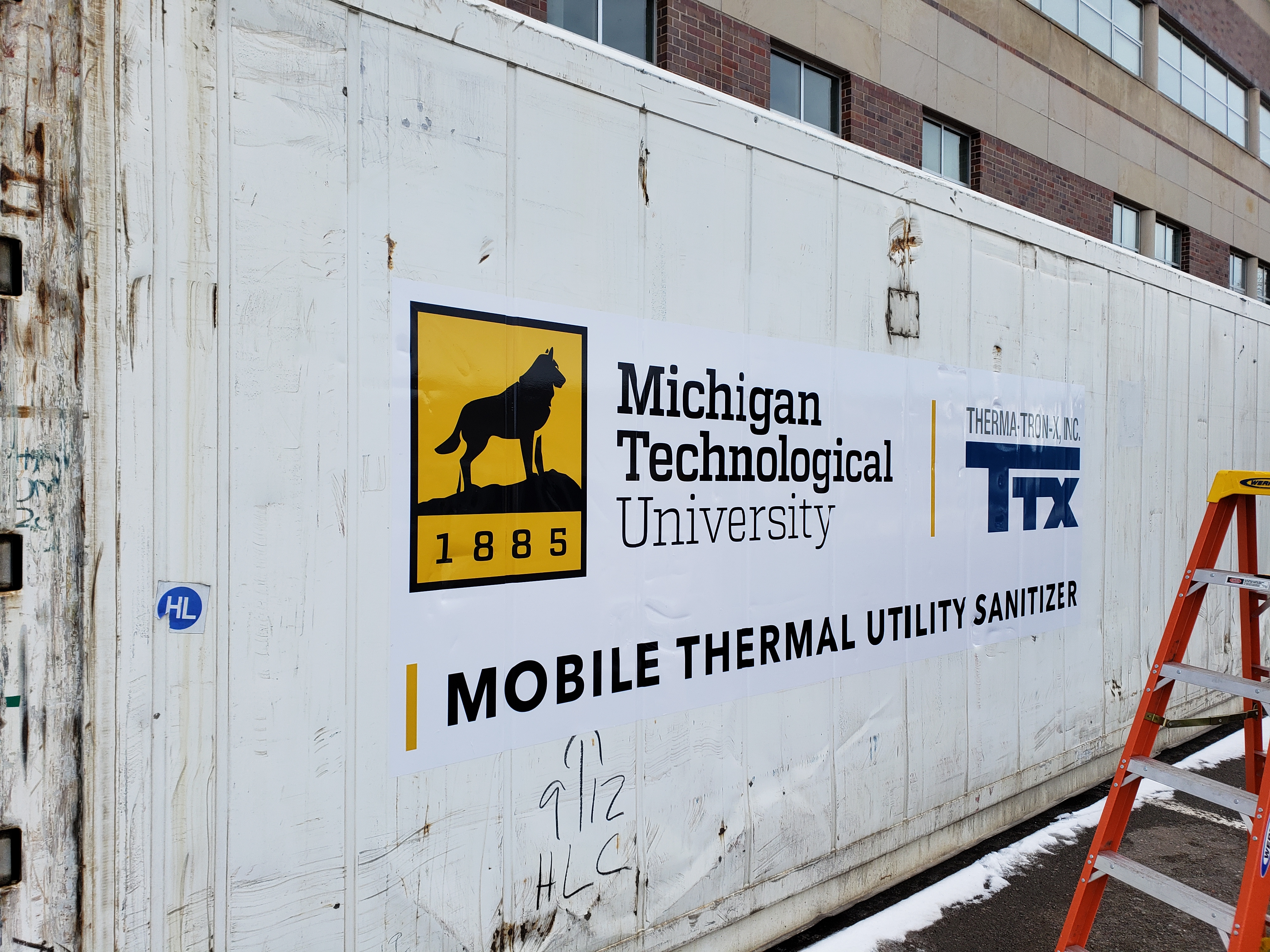
MTU Engineers Build Mobile Unit to Clean COVID-19 PPE
A refrigerated shipping container. Commercial-grade baking sheets. A modified oven. These are the off-the-shelf parts of a prototype that uses heat to sanitize personal protection equipment (PPE).
Engineering student builds ventilator prototype in campus residence over weekend using Walmart parts
To help during the COVID-19 pandemic, a mechanical engineering student at Binghamton University, State University of New York, made a ventilator over a weekend mainly using items he bought at Walmart.
University of Kentucky Researchers Seek to Develop Antiviral Membrane Mask
University of Kentucky researcher Dibakar Bhattacharyya has the concept and the means to develop a medical face mask that would capture and deactivate the COVID-19 virus on contact.
Engineers share designs for 3D printed ventilator adapters to help during coronavirus pandemic
Engineers at Binghamton University, State University of New York have made their designs for 3D printed ventilator adapters available to the public to help during the coronavirus pandemic.

UC San Diego Engineers and Doctors Retrofit and Build Ventilators with 3D-Printing
A team of engineers and physicians at the University of California San Diego is working to turn emergency hand-held ventilators into devices that can work autonomously for long periods of time, without human input.
Engineers make progress in developing face shields, N95 masks to combat coronavirus
Engineers at Binghamton University, State University are testing prototypes of ventilator adapters, masks, face shields and a UV sterilizing technique to help local healthcare partners during the coronavirus pandemic.
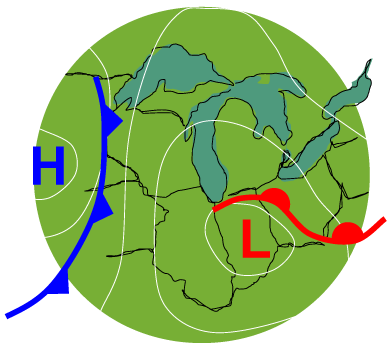
Creative connections for children during COVID-19
NEXT.cc, an organization that serves teachers and students around the world, is reaching out to children and families to share its variety of free science, technology, engineering, arts and mathematics (STEAM) projects through its website, Facebook and Linked In.

Engineers design ventilator parts, face shields to combat coronavirus
Engineers at Binghamton University, State University of New York are stepping up on several fronts to help regional healthcare providers deal with the coronavirus pandemic.

Sandia supports hypersonic flight test
Sandia National Laboratories employees and contractors saw their work culminate in a hypersonic flight test conducted by the U.S. Navy and U.S. Army on March 19 at the Kauai Test Facility in Hawaii.

FAU Programs Make U.S. News & World Report Lists for 2021 ‘Best Graduate Programs’
More than one dozen Florida Atlantic University graduate programs are included in the latest U.S. News & World Report’s “Best Graduate Programs” for 2021.
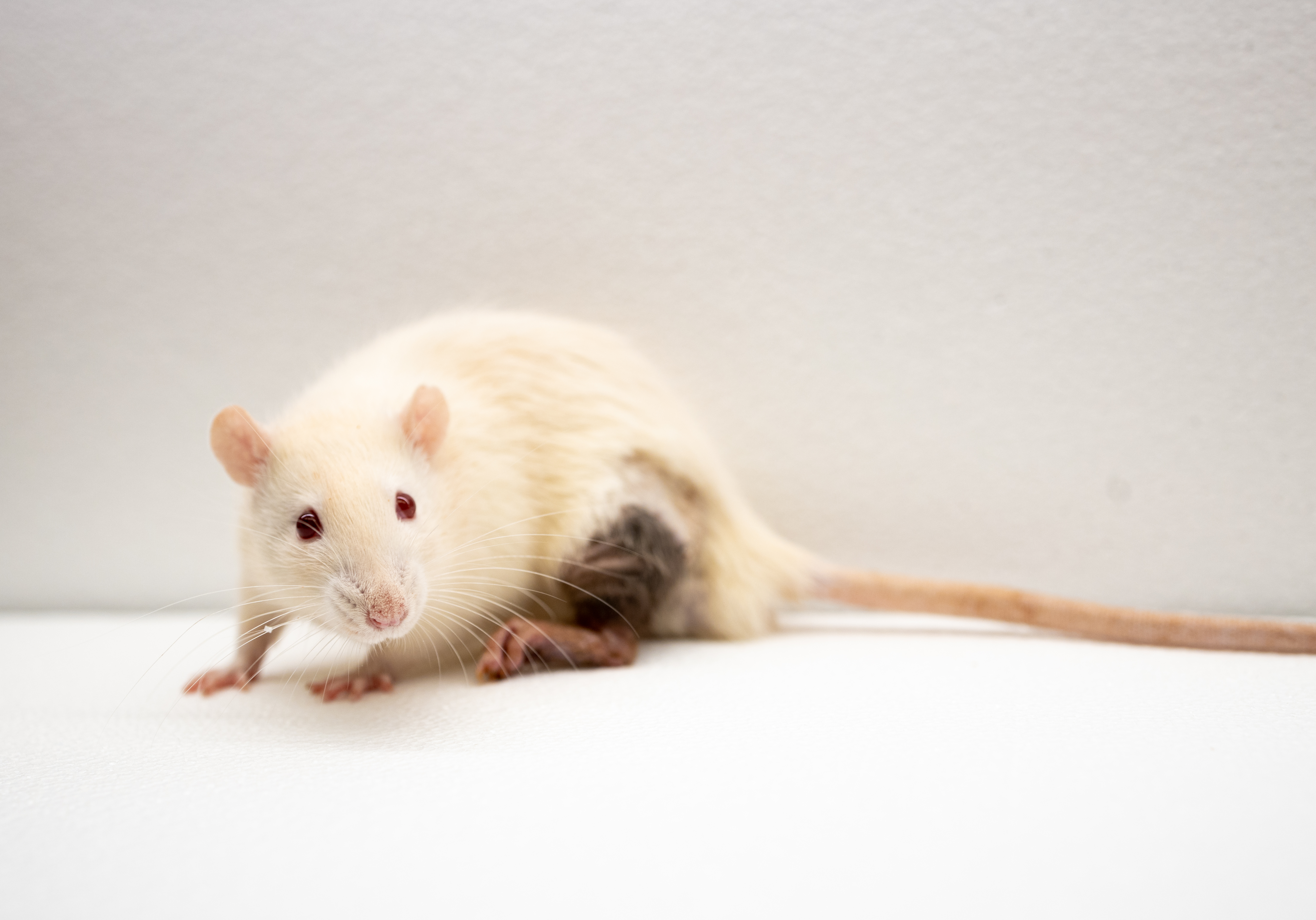
Mimicking Cancer’s Evasive Tactics, Microparticles Show Promise Against Transplant Rejection
Inspired by a tactic cancer cells use to evade the immune system, University of Pittsburgh researchers have engineered tiny particles that can trick the body into accepting transplanted tissue as its own, while leaving the immune system intact.
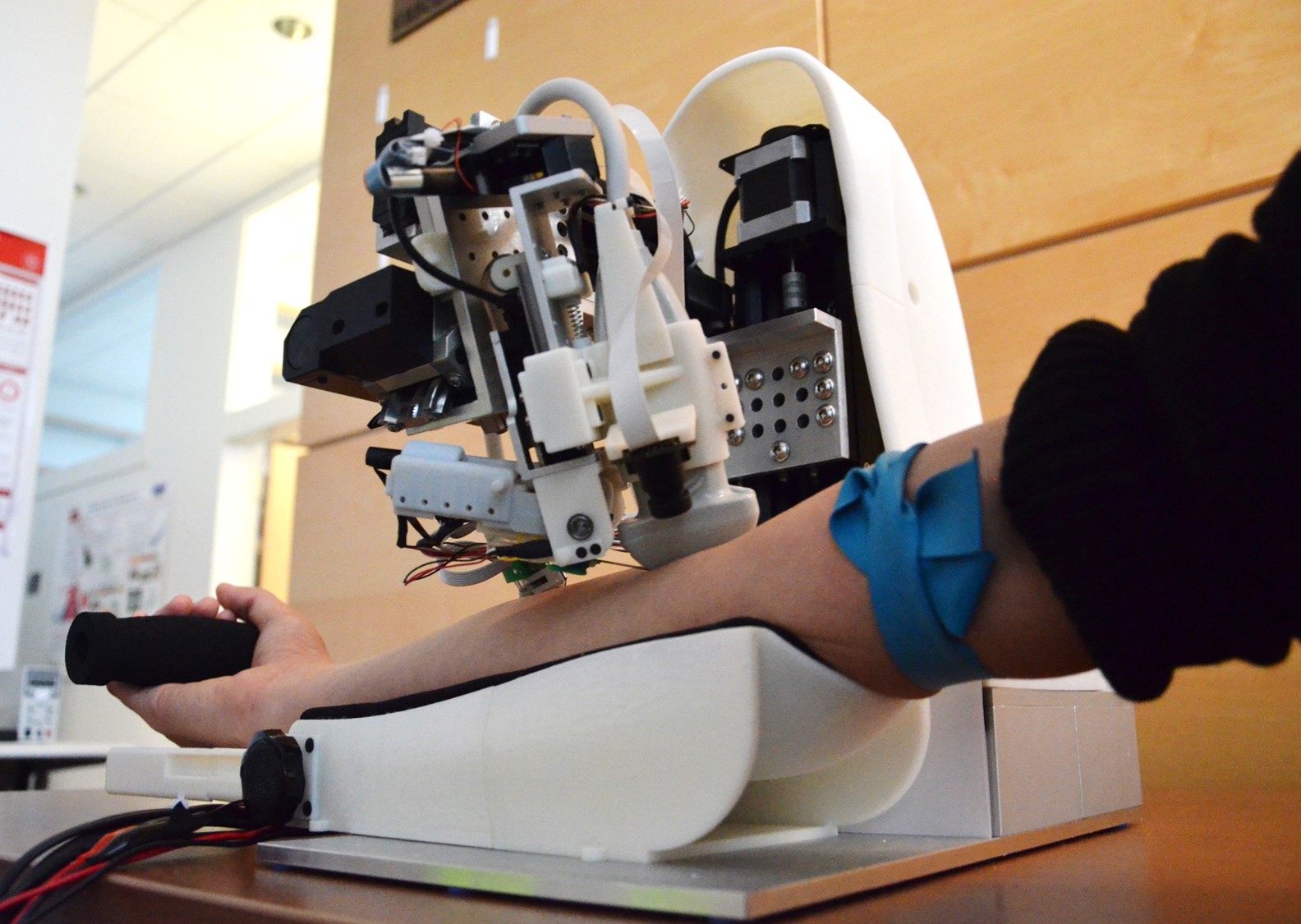
Robot Uses Artificial Intelligence and Imaging to Draw Blood
Rutgers engineers have created a tabletop device that combines a robot, artificial intelligence and near-infrared and ultrasound imaging to draw blood or insert catheters to deliver fluids and drugs. Their research results, published in the journal Nature Machine Intelligence, suggest that autonomous systems like the image-guided robotic device could outperform people on some complex medical tasks.

Scientists pair machine learning with tomography to learn about material interfaces
Researchers have put a new technique based on machine learning to work uncovering the secrets of buried interfaces and edges in a material.
Engineers develop skin rejuvenation method using stem cells
BINGHAMTON, NY — Vesicles derived from human stem cells can be used to rejuvenate skin, according to a research team including faculty at Binghamton University, State University of New York. The use of stem cell-derived extracellular vesicles (EVs) as a cell-free…
New Software Tests Asphalt Performance More Efficiently
New Brunswick, N.J. (Feb. 26, 2020) – Rutgers University–New Brunswick researchers have created a software tool that more efficiently analyzes how asphalt performs, saving transportation agencies time and money. As performance testing for asphalt pavement has evolved, the focus has shifted…

Design of the W7-X fusion device enables it to overcome obstacles, scientists find
Advanced design of the world’s largest and most powerful stellarator demonstrates the ability to moderate heat loss from the plasma that fuels fusion reactions.
New air-pressure sensor could improve everyday devices
A team of mechanical engineers at Binghamton University, State University of New York investigating a revolutionary kind of micro-switch has found another application for its ongoing research.
Stacey Nicholas donates $5 million to UCI in support of diversity and inclusiveness
Irvine, Calif., Feb. 10, 2020 — A $5 million gift from UCI Foundation trustee Stacey Nicholas will endow and rename a program serving both The Henry Samueli School of Engineering and the Donald Bren School of Information & Computer Sciences – the UCI Office of Access & Inclusion – that supports the recruitment, retention and graduation of students from historically excluded populations who are underrepresented in science, technology, engineering and math.
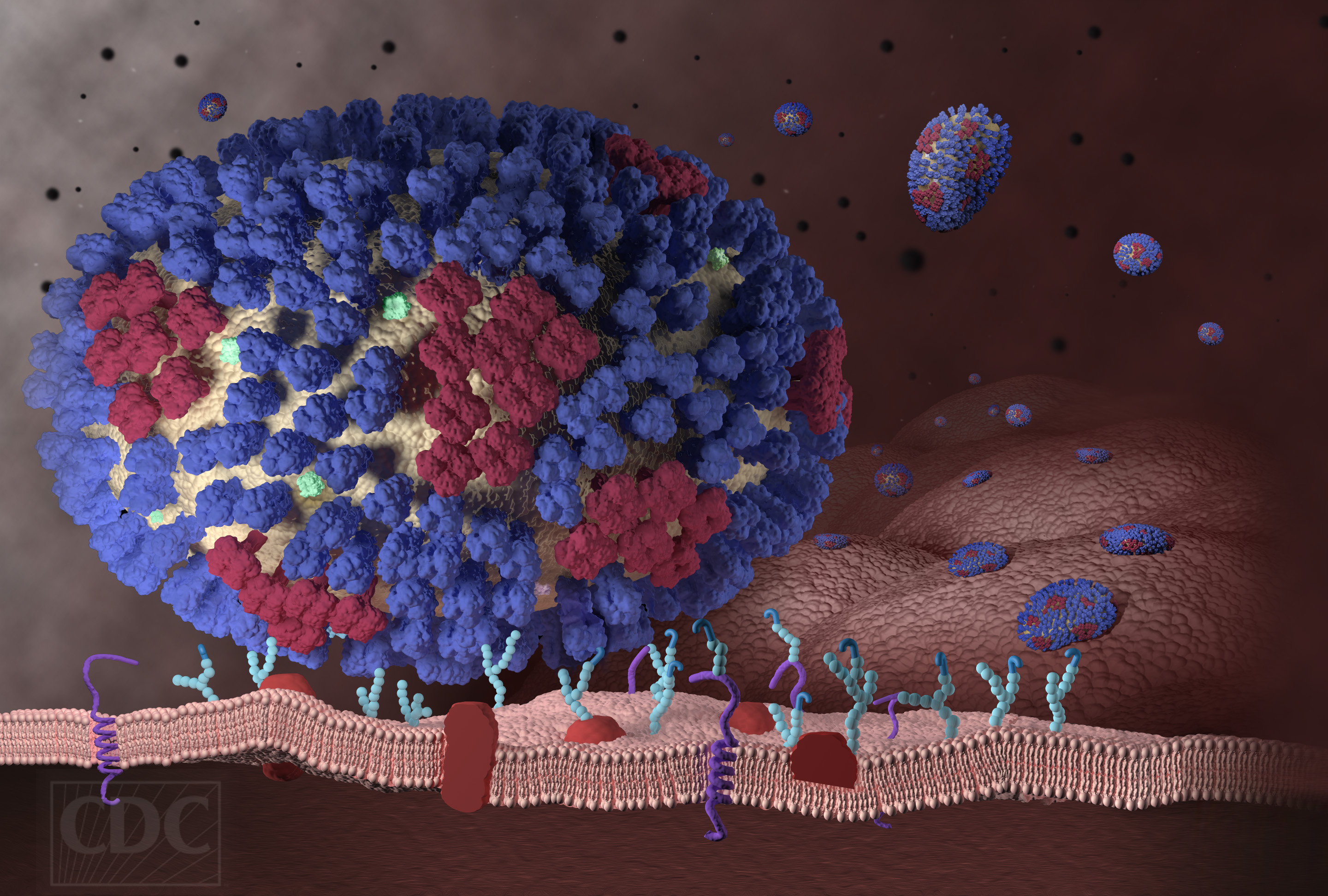
New Tool Monitors Real Time Mutations In Flu
A Rutgers-led team has developed a tool to monitor influenza A virus mutations in real time, which could help virologists learn how to stop viruses from replicating. The gold nanoparticle-based probe measures viral RNA in live influenza A cells, according to a study in The Journal of Physical Chemistry C. It is the first time in virology that experts have used imaging tools with gold nanoparticles to monitor mutations in influenza, with unparalleled sensitivity.
Crystal-stacking process can produce new materials for high-tech devices
Stacking ultrathin complex oxide single-crystal layers allows researchers to create new structures with hybrid properties and multiple functions. Now, using a new platform developed by engineers at the University of Wisconsin–Madison and the Massachusetts Institute of Technology, researchers will be able to make these stacked-crystal materials in virtually unlimited combinations.
LLNL develops 3D ‘brain-on-a-chip’ device capable of long-term recording of neural activity
Lawrence Livermore National Laboratory engineers and biologists have developed a “brain-on-a-chip” device capable of recording the neural activity of living brain cell cultures in three-dimensions, a significant advancement in the realistic modeling of the human brain outside of the body.
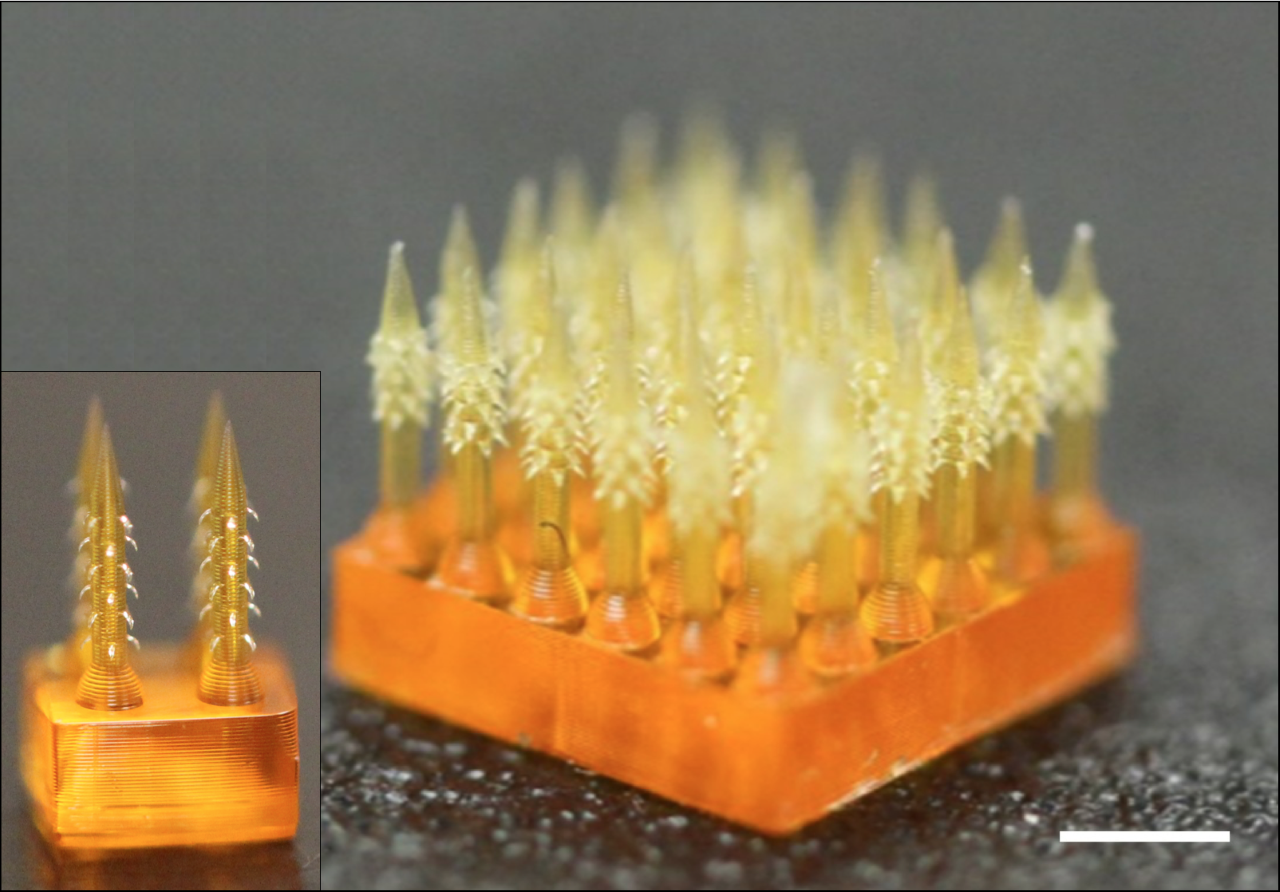
High-Tech Printing May Help Eliminate Painful Shots
Painful hypodermic needles may not be needed in the future to give shots, inject drugs and get blood samples. With 4D printing, Rutgers engineers have created tiny needles that mimic parasites that attach to skin and could replace hypodermic needles, according to a study in the journal Advanced Functional Materials.
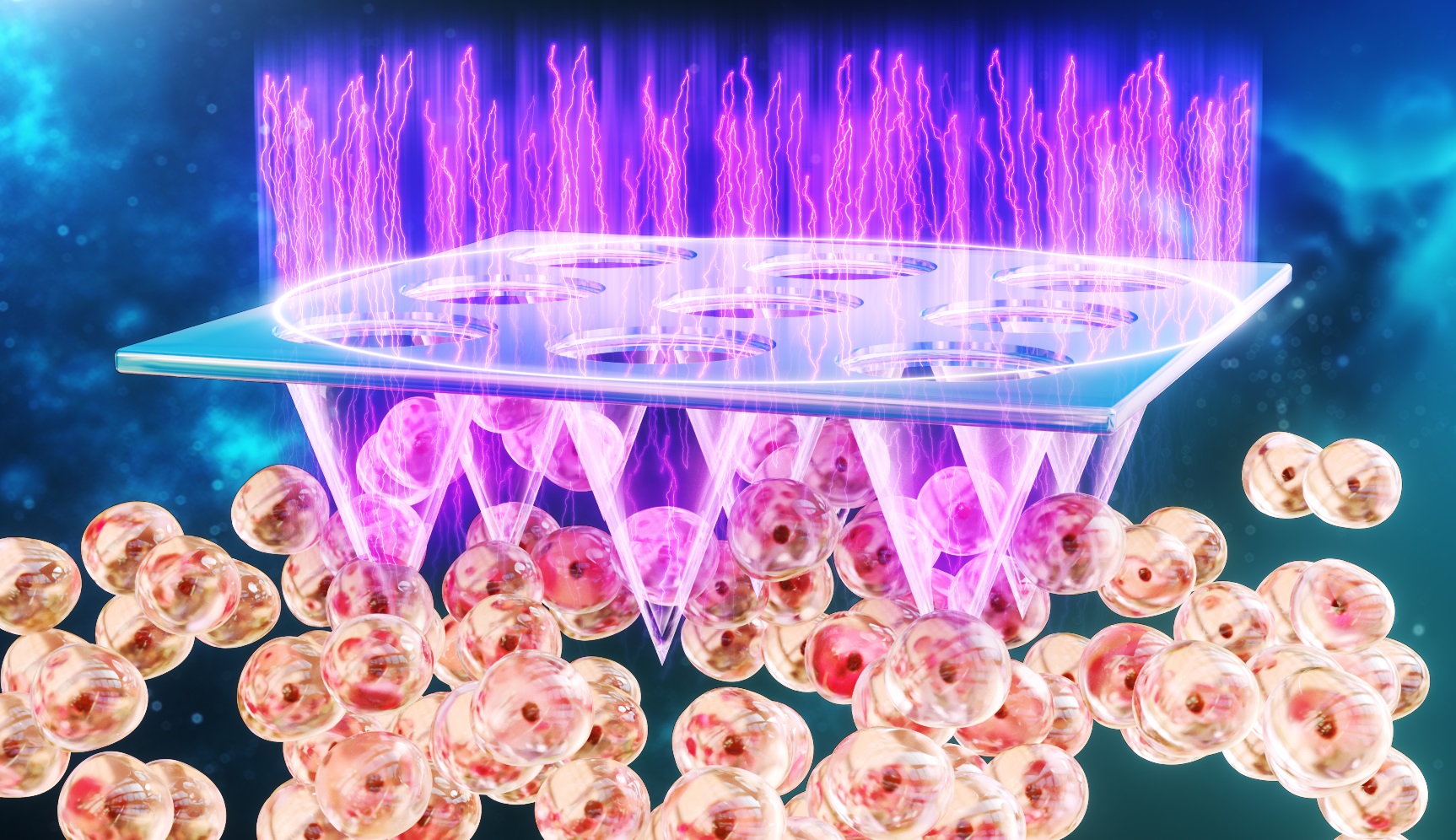
Cold plasma patch could make immunotherapy more effective for treating melanoma, study finds
An interdisciplinary team of researchers at the UCLA Jonsson Comprehensive Cancer Center has developed a medicated patch that can deliver immune checkpoint inhibitors and cold plasma directly to tumors to help boost the immune response and kill cancer cells.